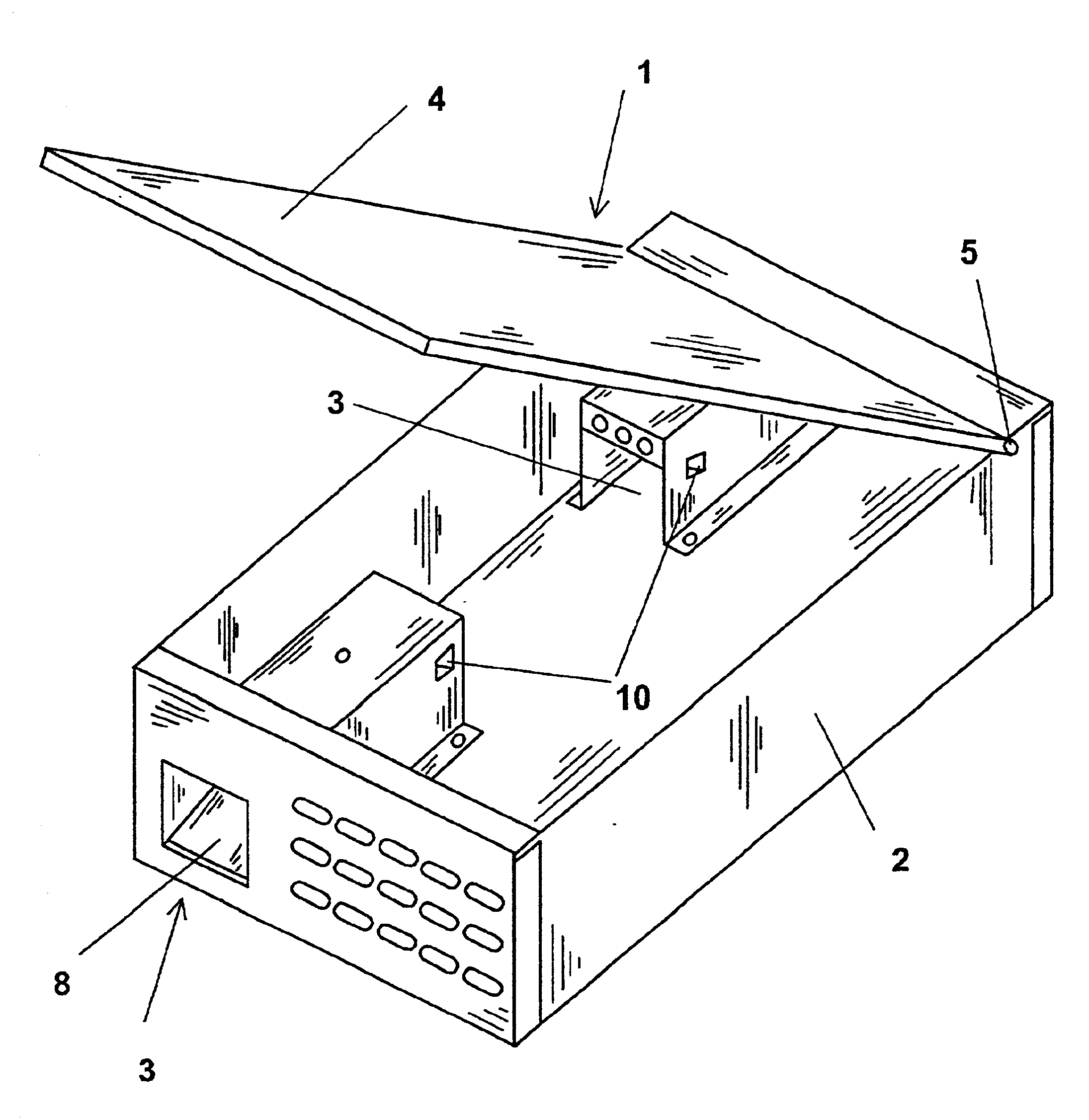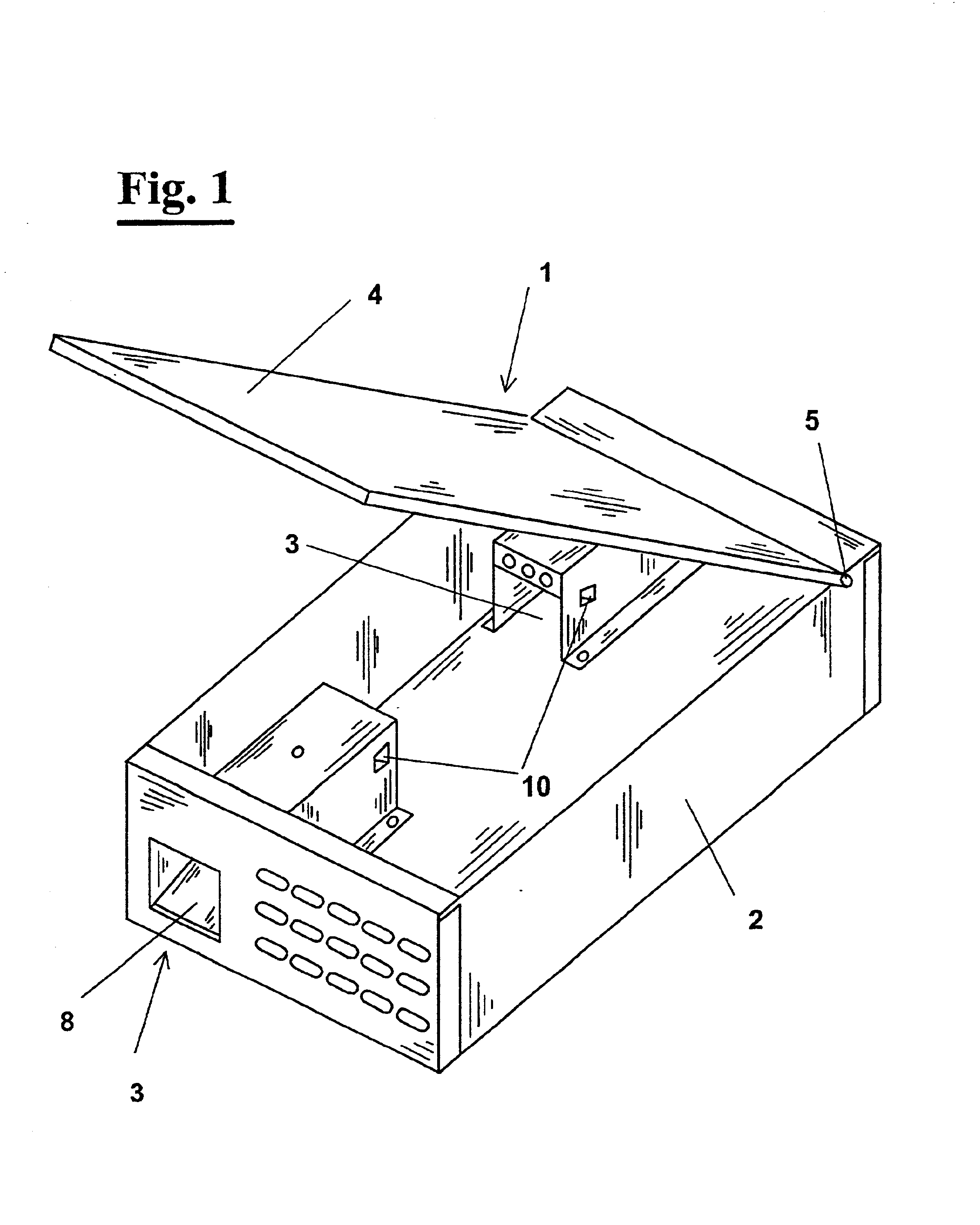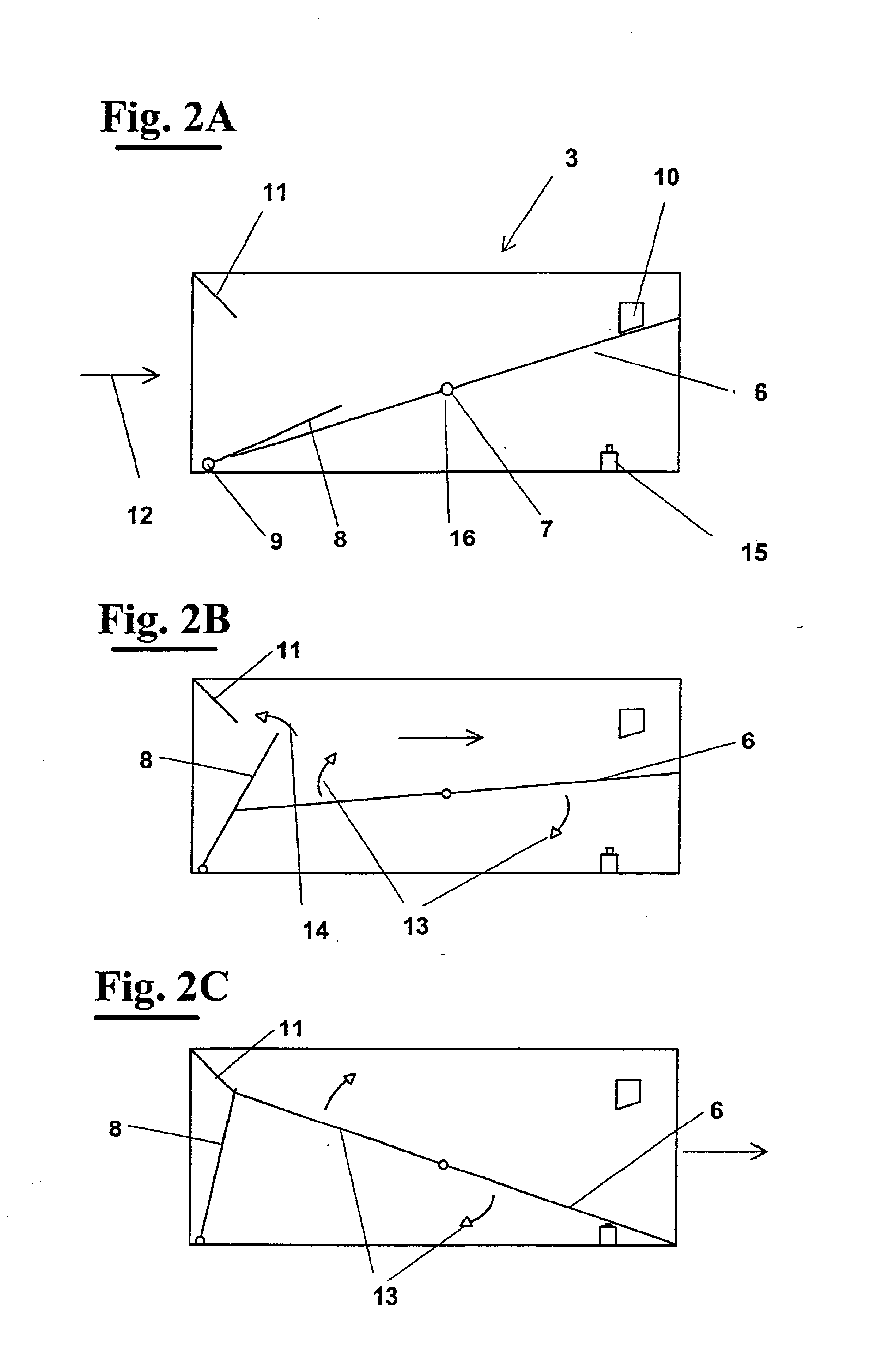Method for signalling the presence of prey in traps for vermin and device for carrying out this method
a technology of prey and traps, applied in the field of rodent disinfestation, can solve the problems of troublesome rodent infestation in human-occupied areas, particularly detrimental rodent infestation, and affecting the safety of workers,
- Summary
- Abstract
- Description
- Claims
- Application Information
AI Technical Summary
Benefits of technology
Problems solved by technology
Method used
Image
Examples
Embodiment Construction
[0042]With reference to FIG. 1, trap 1 according to the present invention generally comprises a box-shaped body 2, two inlet ports 3, and cover 4 hinged to the end on two pins 5, of which only one is shown.
[0043]With reference now to FIGS. 2A-2C and 3, inlet port 3 is equipped with a one way mechanism comprising tilting platform 6, hinged on central pin 7; tilting wing 8, hinged on side pin 9, abutments 10 and 11, and pushbutton / switch 15. As can be seen in FIGS. 2A-2C, the operation of the inlet port 3 mechanism for trapping the prey is shown diagrammatically; an animal enters the trap according to direction 12 of FIG. 2A and passes central pin 7 to cause rotation 13 of tilting platform 6, rotation of tilting platform 6 causes tilting wing 8 to raise in direction according to arrow 14 and to touch abutment 11. After the prey has passed the inlet port, the weight of the wing causes tilting platform 6 to rotate as shown in FIG. 2C, which returns the trap back to the starting position...
PUM
 Login to View More
Login to View More Abstract
Description
Claims
Application Information
 Login to View More
Login to View More - R&D
- Intellectual Property
- Life Sciences
- Materials
- Tech Scout
- Unparalleled Data Quality
- Higher Quality Content
- 60% Fewer Hallucinations
Browse by: Latest US Patents, China's latest patents, Technical Efficacy Thesaurus, Application Domain, Technology Topic, Popular Technical Reports.
© 2025 PatSnap. All rights reserved.Legal|Privacy policy|Modern Slavery Act Transparency Statement|Sitemap|About US| Contact US: help@patsnap.com



